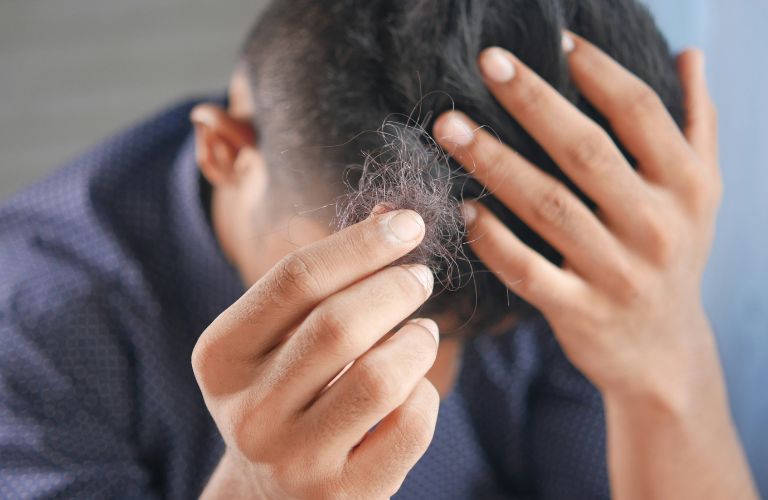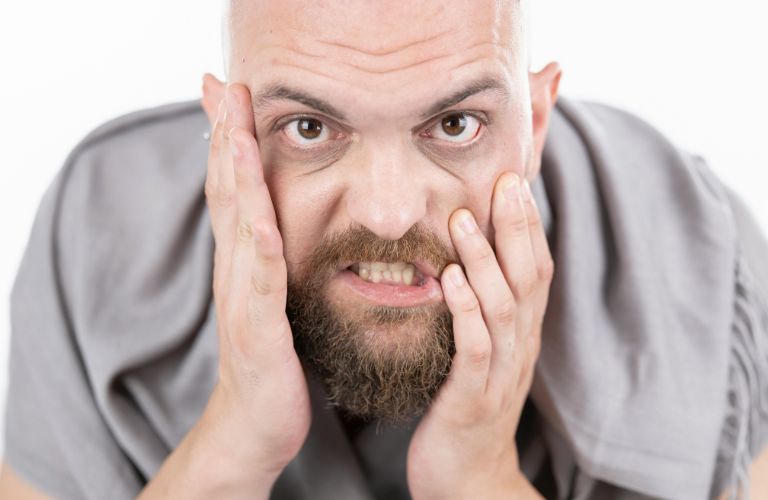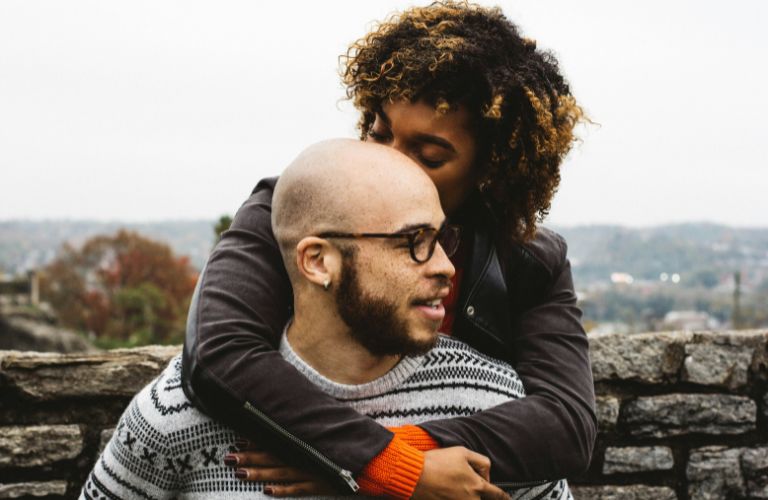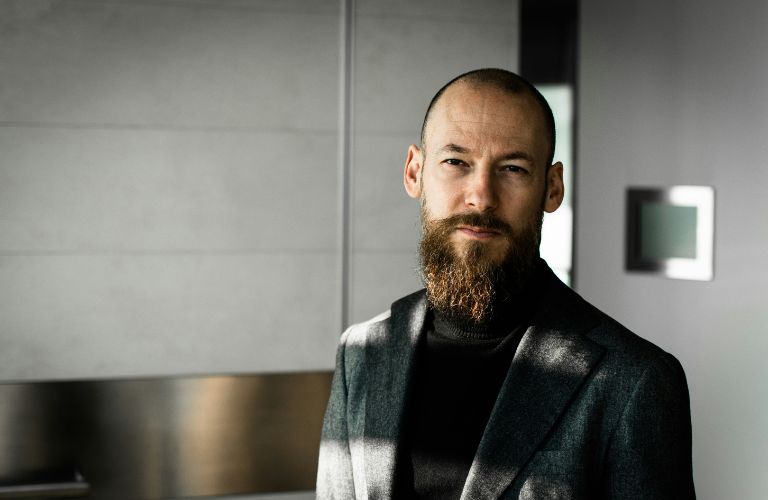Accept Baldness with Confidence
Baldness, also known as alopecia, is a condition characterized by partial or complete loss of hair on the scalp. It can affect individuals of any age, gender, or background and may result from various factors such as genetics, hormonal changes, medical conditions, or aging. While baldness is often perceived as a cosmetic concern, its impact extends beyond physical appearance to encompass psychological and emotional well-being. The key is to ‘accept’ getting bald.
Self-acceptance is a fundamental aspect of mental health and overall well-being. It involves recognizing and embracing one’s unique qualities, flaws, and differences without judgment or self-criticism. In the context of baldness, self-acceptance entails coming to terms with the changes in one’s physical appearance and cultivating a positive attitude towards oneself, regardless of hair loss. Embracing baldness can lead to increased confidence, resilience, and inner peace.
The purpose of this blog is to offer guidance and support to individuals struggling to accept their baldness. It aims to address the challenges and emotions associated with hair loss while providing practical strategies and insights for fostering self-acceptance and embracing baldness as a natural part of life.
Understanding Baldness – The Process
Baldness can be attributed to a variety of factors, including genetics, age, and certain medical conditions. For many individuals, baldness is hereditary, passed down through family genes. As we age, our hair follicles may become less active, leading to gradual thinning and eventual baldness. Additionally, medical conditions such as alopecia areata or hormonal imbalances can contribute to hair loss. Understanding the underlying causes of baldness can help u contextualize their experience and realize that it’s not solely within your control.

Psychological Impact of Baldness
The psychological impact of baldness can be profound, affecting self-esteem, body image, and overall well-being. For some, hair loss may evoke feelings of insecurity, embarrassment, or even depression. Society’s emphasis on youth and beauty can boost these feelings, leading individuals to perceive baldness as a flaw or body defect. It’s essential to acknowledge and validate these emotions, recognizing that they are a natural response to a significant change in appearance.
Baldness is a natural and common phenomenon that affects millions of people worldwide. It’s important to normalize baldness and challenge societal stereotypes and stigmas associated with hair loss. Recognizing that baldness is neither abnormal nor shameful can help us feel more at ease with our appearance. By highlighting baldness as a natural variation in human diversity, we can promote acceptance and inclusivity, paving the way for greater self-acceptance and confidence among individuals experiencing hair loss.
Acknowledging Initial Feelings of Getting Bald
The journey to accepting baldness often begins with a whirlwind of emotions, including shock, denial, and sadness. It’s natural to feel caught off guard or overwhelmed upon realizing the extent of hair loss. Many individuals experience a sense of disbelief or denial, hoping that the situation will somehow rectify itself. Additionally, feelings of sadness or grief may arise as individuals mourn the loss of their former appearance. Acknowledging these initial reactions is a crucial first step toward acceptance.

It’s important to recognize that the emotions associated with hair loss are entirely normal and valid. Whether it’s frustration, anger, or insecurity, each feeling serves as a natural response to a significant change in appearance. Society’s beauty standards and cultural expectations can enhance these emotions, making individuals feel as though they are alone in their struggles. However, by normalizing these emotions and acknowledging their universality, we can find solace in the shared experiences of others facing similar challenges.
Importance of Self-Compassion and Validation of Feelings
Self-compassion plays a pivotal role in the journey towards accepting baldness. It involves treating oneself with kindness, understanding, and empathy, especially during times of difficulty or self-doubt. Validating one’s feelings and experiences is an essential aspect of self-compassion, as it helps individuals recognize their inherent worth and value, irrespective of their appearance. By practicing self-compassion, we can cultivate a sense of inner peace and acceptance, laying the foundation for embracing baldness with grace and confidence.
Shifting Perspectives Related to Being Bald
Challenging Societal Beauty Standards
Societal beauty standards often prioritize a certain type of appearance, which can promote feelings of inadequacy for individuals experiencing hair loss. However, it’s essential to challenge these standards and recognize that beauty comes in diverse forms. By questioning the narrow definitions of attractiveness perpetuated by society, we can liberate ourselves from the pressure to conform and embrace their unique features, including baldness, as part of our beauty.
Embracing diversity entails celebrating the richness of human variation, including differences in appearance such as hair texture, color, and thickness. Baldness is just one aspect of this diversity, and by embracing it, individuals can cultivate a greater sense of inclusivity and acceptance. Recognizing that each person is inherently valuable and worthy, regardless of our appearance, empowers us to celebrate our individuality and appreciate the unique qualities that make us who we are.

Reframing Baldness as a Unique Characteristic
Rather than viewing baldness as a flaw or deficiency, individuals can reframe it as a unique characteristic that contributes to their identity. Just as some people have curly hair or freckles, others have a bald head, and each feature adds to the richness of one’s appearance. Once you accept getting bald, it is uphill from there. By reframing baldness in a positive light, we can shift their perspective from one of self-consciousness to one of self-assurance, recognizing that our baldness is a distinctive aspect of who we are and something to be embraced rather than hidden or ashamed of.
Practical Strategies to Help with Acceptance of Being Bald
One of the most effective strategies for accepting baldness is seeking support from loved ones and peers. Opening up to trusted friends and family members about your feelings surrounding hair loss can provide valuable emotional support and validation. Sharing your experiences with others who understand and empathize with your situation can help alleviate feelings of isolation and loneliness. Additionally, seeking guidance from support groups or online communities dedicated to individuals experiencing hair loss can offer a sense of belonging and camaraderie.
Exploring Styling Options (Shaving, Grooming)
Exploring different styling options can be empowering and help individuals reclaim a sense of control over their appearance. For some, embracing baldness may involve shaving their head completely, while others may prefer experimenting with grooming techniques to enhance their remaining hair. Whether it’s experimenting with different hairstyles, trying out hair accessories, or investing in quality grooming products, finding a style that makes you feel confident and comfortable is key. Embracing baldness doesn’t mean giving up on personal style; it’s about finding a look that reflects your authentic self.

Focusing on Other Aspects of Self-Worth and Identity
While hair loss can have a significant impact on self-esteem, it’s important to remember that there is more to your identity than your appearance. Focusing on other aspects of self-worth, such as your talents, skills, passions, and relationships, can help cultivate a sense of confidence and fulfillment. Engaging in activities that bring you joy and fulfillment, pursuing personal or professional goals, and nurturing meaningful connections with others can remind you of your inherent value and worth beyond physical appearance. By shifting your focus away from hair loss and towards the qualities that make you unique and valuable, you can cultivate a greater sense of self-acceptance and contentment.
Building Confidence to Handle Baldness
Cultivating a positive self-image begins with changing the way we perceive ourselves. Instead of focusing on perceived flaws or insecurities, individuals can shift their attention to their strengths, talents, and inner qualities. Affirmations and positive self-talk can help reinforce a more positive self-image, reminding individuals of their inherent worth beyond their physical appearance. By recognizing and appreciating their unique attributes, including their baldness, individuals can foster greater confidence in themselves.
Practicing Self-Care and Self-Love
Practicing self-care and self-love is essential for nurturing confidence and well-being. This involves prioritizing activities and habits that promote physical, emotional, and mental health. Engaging in regular exercise, maintaining a balanced diet, getting enough sleep, and managing stress are all important aspects of self-care. Additionally, self-love entails treating oneself with kindness, compassion, and acceptance. Taking time for relaxation, pursuing hobbies, and surrounding oneself with supportive relationships can also contribute to feelings of self-worth and confidence.
Celebrating Baldness as a Symbol of Strength and Resilience
Rather than viewing baldness as a source of shame or embarrassment, we can choose to celebrate it as a symbol of strength and resilience. Baldness may be the result of various factors, including genetics, medical conditions, or personal choice, but regardless of the cause, embracing it can be empowering. Baldness can signify overcoming challenges, embracing authenticity, and embodying confidence in one’s appearance. By reframing baldness as a positive attribute, we can reclaim their sense of identity and find strength in our lives.
Seeking Professional Help – Only When Needed
Therapy or Counseling for Body Image Issues
Therapy or counseling can be invaluable resources for individuals struggling to accept their baldness and navigate associated body image issues. Professional therapists or counselors are trained to provide support, guidance, and coping strategies tailored to each individual’s unique needs. Through therapy, individuals can explore underlying emotions, challenge negative thought patterns, and develop healthier perspectives on self-image and appearance. Seeking professional help can empower us to address deep-seated insecurities and foster a sense of self-acceptance and confidence.
Exploring Support Groups and Online Communities
Finding support and solidarity in others who share similar experiences can be immensely comforting and empowering. Support groups and online communities dedicated to hair loss offer safe spaces for individuals to connect, share stories, and offer mutual support. These communities provide a sense of belonging and understanding, helping individuals feel less isolated in their struggles. By participating in discussions, sharing insights, and receiving encouragement from peers, individuals can gain valuable perspectives and coping strategies for accepting their baldness. Moreover, witnessing others’ journeys towards self-acceptance can inspire hope and motivation for one’s path to acceptance.
Embracing Baldness as Part of Identity – The Ultimate Victory
Baldness is not a flaw to be hidden or ashamed of but rather a unique aspect of one’s appearance to be celebrated. Embracing baldness involves reframing it from a perceived deficiency to a distinctive feature that adds character and individuality. By shifting the focus from what is lacking to what is unique, individuals can cultivate a sense of pride in their baldness and recognize it as an integral part of their identity.

Incorporating Baldness into Personal Style and Identity
Rather than viewing baldness as a limitation, individuals can harness it as an opportunity for creative expression and self-reinvention. Embracing baldness involves experimenting with different hairstyles, grooming techniques, and fashion choices to complement one’s bald head and enhance personal style. Whether it’s sporting a clean-shaven look, experimenting with facial hair, or accessorizing with hats and headscarves, incorporating baldness into personal style allows us to assert ownership over our appearance and express ourselves authentically.
At its core, when you accept getting bald, you embrace yourself fully, flaws and all. It’s about finding empowerment in self-acceptance and authenticity, recognizing that true beauty lies in embracing one’s uniqueness and living unapologetically. By rejecting societal norms and embracing their authentic selves, we can reclaim our power and confidence, transcending external judgments and expectations. Finding empowerment in self-acceptance allows us to navigate the world with authenticity and grace, inspiring others to do the same.
Baldness is a Natural Phenomenon. There is Nothing to Be Worried About or Be Ashamed Of. Wear Your Bald Head with Pride.
Embracing baldness is not merely about accepting a physical change; it’s about embracing a new chapter of self-discovery and empowerment. By letting go of societal expectations and embracing our authentic selves, we can exude confidence and radiate self-assurance from within. Remember, true beauty lies not in our external appearance but in our ability to embrace our uniqueness and individuality with pride.
Accept getting bald, be happy to be unique, and wear your bald head with pride! Cheers!
[Also read: How Can I Control My Fear Effectively?]

